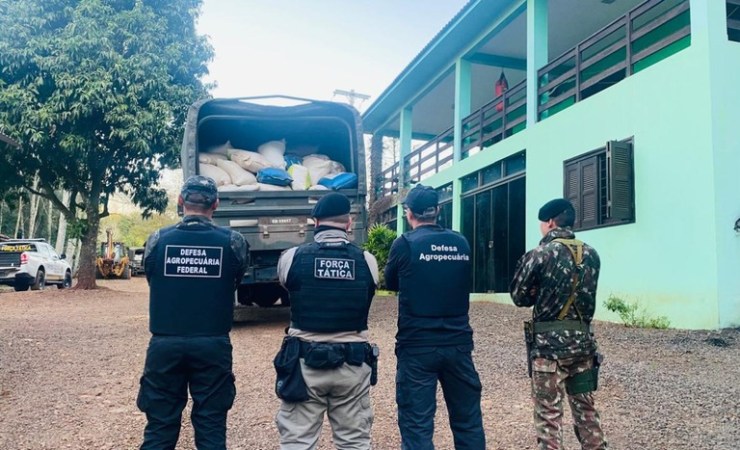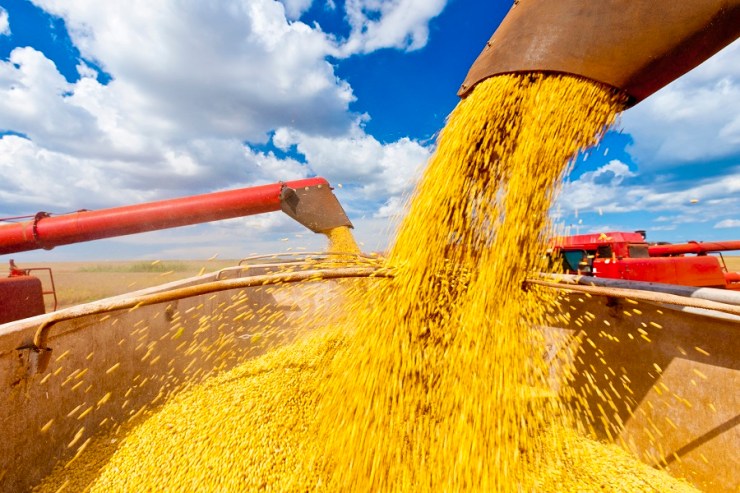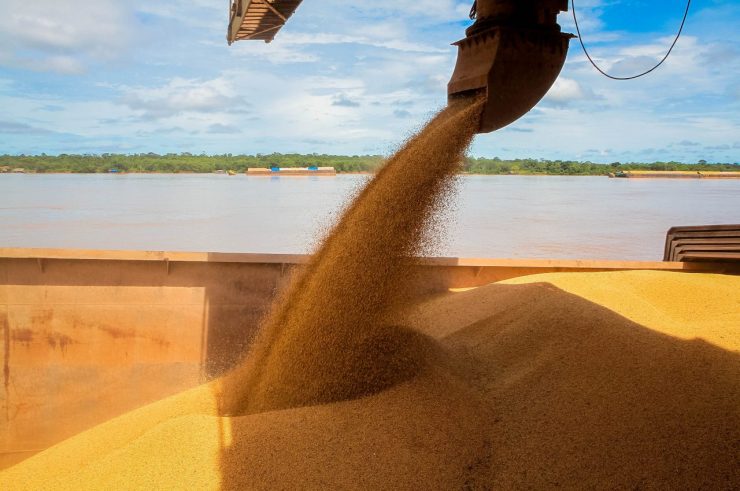The tool that detects soybean diseases, resulting from the partnership between Embrapa, Macnica DHW and InnerEye, is available for testing this harvest. Technicians and producers who work with the crop in the country can now access the application PlantCheck ID, free of charge, for Android and iOS systems in the app stores. It will soon also be available for detecting corn diseases.
The partnership began in 2022 with training the system to recognize diseased and non-diseased plants, then for diseases of economic relevance, and is now advancing to offering the tool for large-scale testing. The application has a simplified interface, according to Jayme Barbedo, researcher at Embrapa Digital Agriculture and leader of the project,

Photo: Disclosure/Faep System
“The user observes a symptom in the crop for which he would like a diagnosis. He takes a photograph and sends it, via cell phone or computer, to InnerEye’s servers in Israel. There, the model is run and a response is produced for the user. The process takes no more than a few seconds,” explains Barbedo.
“One of the great advantages of the application is that it makes the disease identification process faster and more assertive, making the producer’s life easier. In addition, it will also soon include some of Embrapa’s own apps, such as ClimaAPI and Agrotermos, allowing users to access all this information from a single platform,” emphasizes Fábio Petrassem de Sousa, president of Macnica DHW.
Asian rust, powdery mildew and target spot are among the main diseases that affect soybean plants that the application, trained using artificial intelligence (AI) based on analyses by experts from Embrapa Soja, can identify at an early stage.
Diseases with similar characteristics make it difficult to distinguish symptoms. “Diseases occur at different stages of the crop, requiring specific management according to the pathogen to ensure efficient application of fungicides,” explains researcher Dagma da Silva Araújo, from Embrapa Milho e Sorgo.
The use of AI to create disease identification mechanisms will provide greater security for decision-making, he says. Without control, Asian rust can cause losses of up to 90% in productivity, according to the Anti-Rust Consortium. The numbers highlight the value of prevention, especially in times of extreme weather events that favor the emergence and expansion of new fungi.
The team of experts points out that there are good reasons for the production sector to participate in the improvement of the technological solution that provides autonomy and agility in identifying plant diseases at an early stage and assertiveness in decision-making. Sustainable agricultural practices are also favored by the use of technology, optimizing the use of pesticides and reducing environmental impacts.
Neural signals
 The pioneering initiative to capture neural signals from plant pathologists at Embrapa Soja and Embrapa Milho e Sorgo to detect diseases is done using an ECG device, a type of helmet with electrodes (photo/Macnica) that capture brain waves. The brain signals are then sent to InnerEye software, which processes the images and provides the results, says Sousa. “This system served as a basis for Macnica specialists to design the application,” he adds.
The pioneering initiative to capture neural signals from plant pathologists at Embrapa Soja and Embrapa Milho e Sorgo to detect diseases is done using an ECG device, a type of helmet with electrodes (photo/Macnica) that capture brain waves. The brain signals are then sent to InnerEye software, which processes the images and provides the results, says Sousa. “This system served as a basis for Macnica specialists to design the application,” he adds.
The system simulates brain function when experts view images of diseased plants, automating labeling and making the step faster and more efficient. Researcher Jayme Barbedo points out that AI tools have evolved a lot, but they lack a large volume of data for continuous improvement.
This is a challenge that the app’s development team intends to overcome with the participation of producers. “The more feedback we get in this large-scale testing phase, the more we will expand the database and the accuracy of the tool,” says Barbedo. The researcher also highlights the educational role of technology in disseminating information about diseases. Free access to the app will continue after the testing phase.
Validation
After the proof of concept, in 2023, which confirmed the accuracy of the method for identifying diseases in soybeans using AI and the model was completed, the first phase of validation of the technology for the crop began this year, with a restricted group of around 20 producers.
The suggestions were used to improve the tool, which is now available free of charge to professionals in agronomy, rural extension and the production sector for the extended testing phase. Watch the video here and download the App from the store by here and from March 2025. The support email for user questions with Macnica is: [email protected] .
“Diseases have very specific characteristics regarding symptoms and can also be confused with symptoms of other diseases and symptoms caused by abiotic factors (which do not result from the action of living beings), says Dagma Araújo. In the future, other diseases should be included, expanding the potential and functionalities of the application, aimed at decision-making.
In the current phase, the goal is to validate whether the use of brain waves as a methodology can be safely applied. The other steps will come with suggestions from producers who are testing the tool in the app, says the researcher.
The improvement of the application should result in a version to be delivered in the second half of 2025, but the improvement will be continuous, aiming to keep up with the dynamics of agricultural activity.
Corn

Photos: Disclosure/Embrapa
Corn, which usually follows soybean, will be the next crop to receive support from the application. According to a study by Embrapa, the consumption of the grain in human food is not very representative from a market perspective, although it is relevant in low-income regions. Between 60% and 80% of grain consumption in Brazil goes to animal feed.
The enfezamentos complex, corn white spot and turcicum spot are the diseases to be included in the system initially. The choice of diseases to be included in the application testing phase is justified by their economic importance for the crop in the country.





